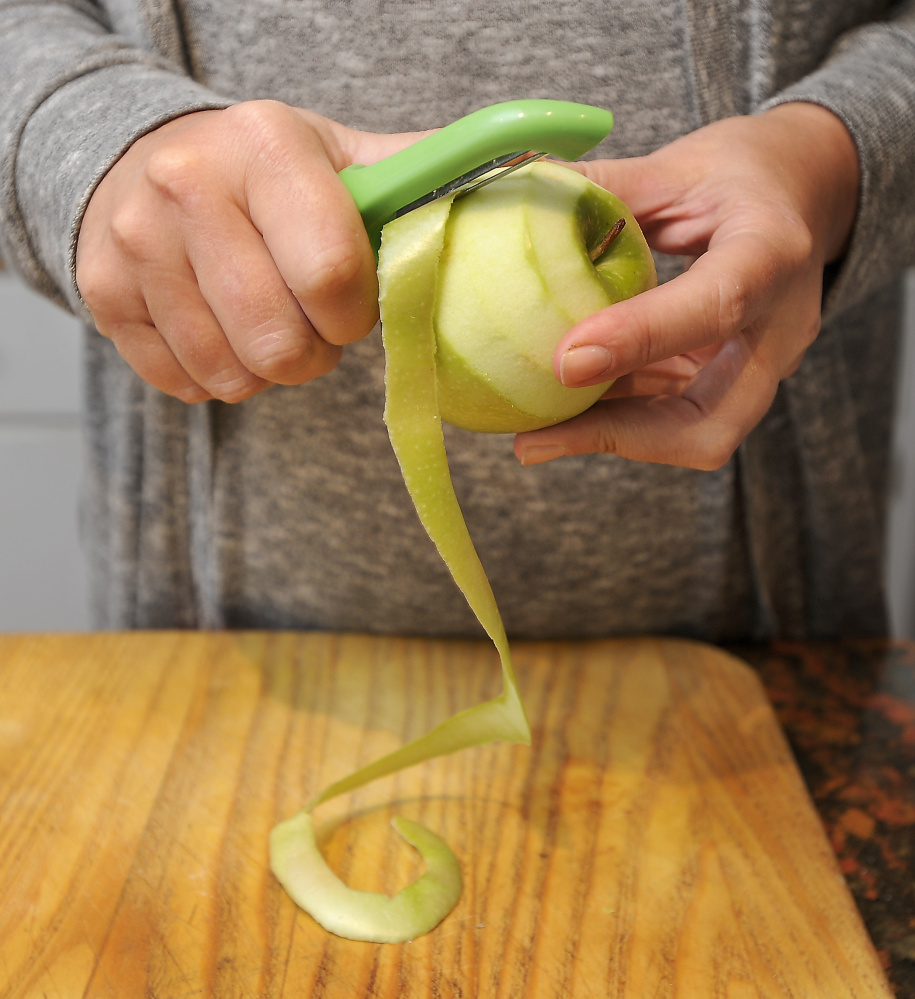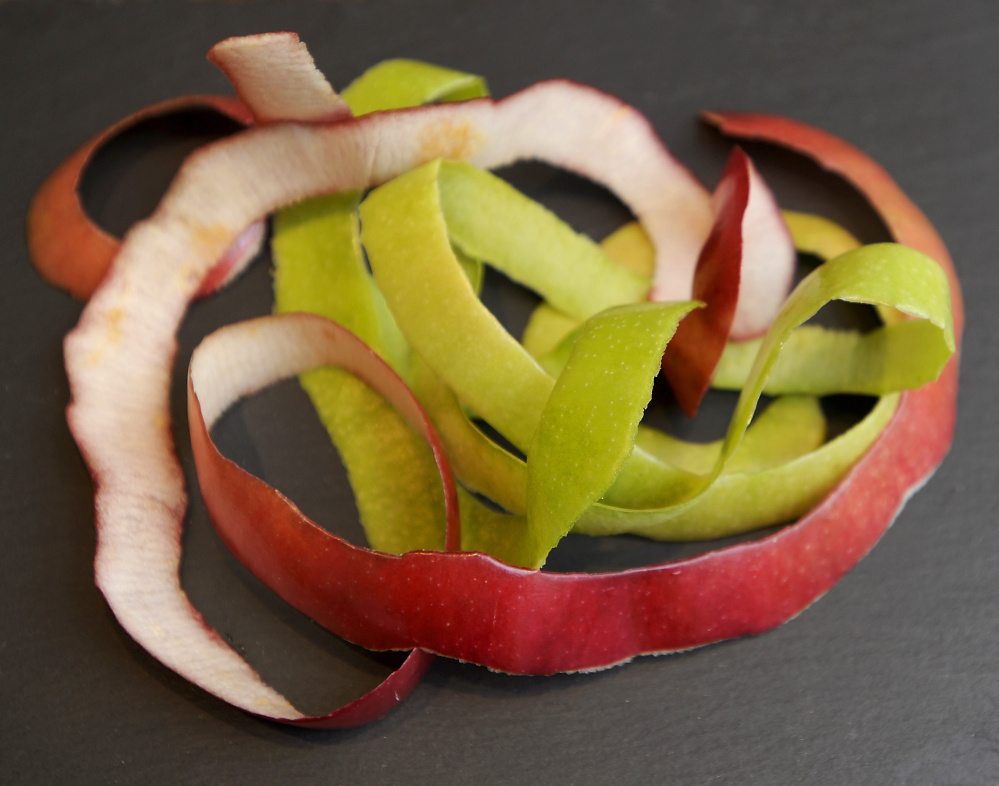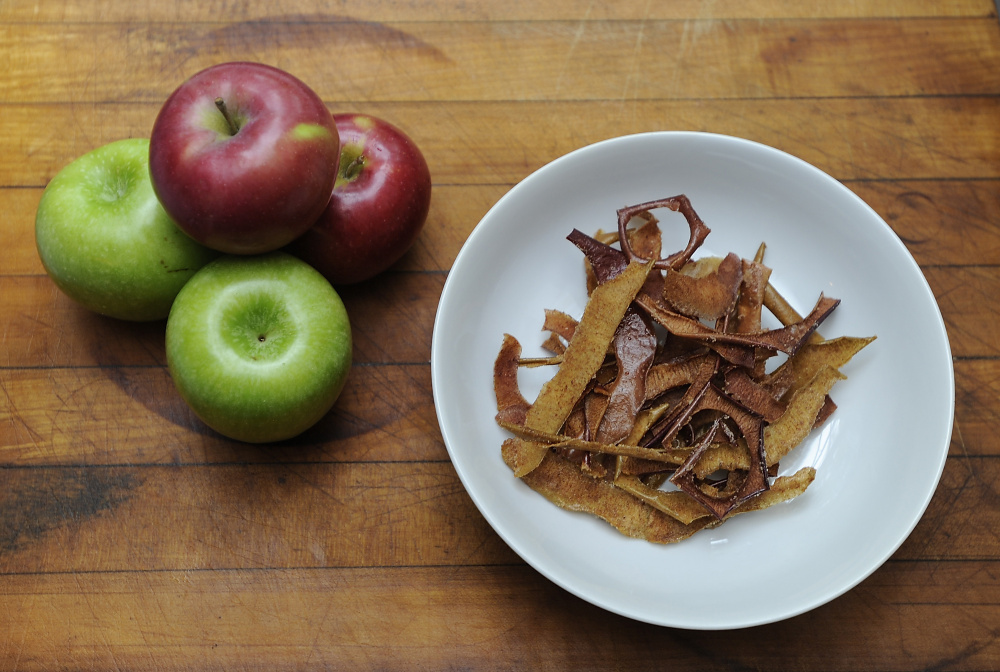My great-grandmother was the culinary bomb when I was 7 because she could remove the peel from any apple with a paring knife in a single, spiraling strip. She’d then challenge any of us underfoot to eat the peels without breaking them in a fashion that required putting our hands behind our backs and having the long helixes stretch from our mouths to our knees. When I had my own kids, I realized the threefold genius of Mabel’s challenge: It reduced waste, cut down on juvenile commotion and staved off hangry meltdowns in her kitchen.
Since we’re squarely into cooking-with-apples season in Maine, I’m spending this week’s space on five things you can do with the cores and peels in addition to keeping great-grandchildren out of trouble.
• Use the cores to make your own apple cider vinegar. This process requires a quart mason jar packed tightly with cores (about 15 to 20 depending on the size of the apples) and 3 tablespoons of raw sugar dissolved in 2 cups of filtered water (not tap water treated with chlorine as that will stop the fermentation process). Cover the jar with several layers of cheesecloth secured with the jar’s ring and place it in a warm corner for a week, giving it a daily stir. Strain the liquid (scum and all as that will become the mother in the vinegar, which is the stuff that turns items into vinegar) into a clean jar. Cover again with cheesecloth and the jar’s ring, and put it in a cool cabinet to ferment for a month, after which it will look and taste like cider vinegar.
• Use the cores to make a sweet and sour flavor booster called gastrique in France or agrodolce in Italy. This flavored syrup – which can be a glaze for pork, a flavoring for seltzer or a component in a salad dressing – is made by combining 10 apple cores, 1 cup of white wine vinegar, 2/3 cup sugar, 2/3 cup water and a few sprigs of thyme in a pot small enough so that the cores are submerged. Bring the pot to a boil and stir until sugar dissolves. Turn down the heat and simmer and reduce the liquid to 1 cup. Strain, allow to cool and store in the refrigerator for up to two weeks.
• On the peel side of this question, my simplest solution is not to peel any apple going into applesauce. Simmer apples skin-on and push them through a food mill when they’re soft to give the applesauce a beautifully rosy hue.
• Flavor and dry the peels (see recipe below) in a low oven for a yummy snack for the kids.
• And finally, maybe my favorite one of all, steep the peels from 1 1/2 pounds of apples in a 750-ml bottle of bourbon with a cinnamon stick and a few cloves for three days at room temperature for a tasty treat for yourself. Toast the fact that you’ve cut down on your kitchen waste in such a lively fashion.
CINNAMON-AND-SPICE APPLE PEEL CRISPS
This recipe takes the peels from apples used in a pie and turns them into a crunchy snack. The time in the oven required to make them crispy will depend how much apple flesh comes off with the peels when you’re prepping them. My great-grandmother Mabel used a paring knife, but I waste less apple if I use a vegetable peeler.
Makes 2 loosely packed cups
3 tablespoons sugar
1/2 teaspoon kosher salt
1/2 teaspoon cinnamon
1/4 teaspoon ground ginger
1/8 teaspoon cayenne pepper
Peels from 6-8 large apples (about 4 cups loosely packed)
Preheat oven to 250 degrees F. Line 2 baking sheets with parchment paper.
Combine sugar, salt, cinnamon, ginger and cayenne in a large bowl. Add peels. Toss to coat. Divide peels between the prepared baking sheets, spreading them out so that none are touching. Bake for 2 to 21/2 hours, rotating sheets every 30 minutes, until the edges of the peels curl in on each other and the skins darken to a light brown. Cool completely. Store in an airtight container.
Christine Burns Rudalevige is a food writer, recipe developer and tester, and cooking teacher in Brunswick. She writes about feeding her family Maine seafood at www.familyfish.net. Contact her at cburns1227@gmail.com.
Send questions/comments to the editors.




